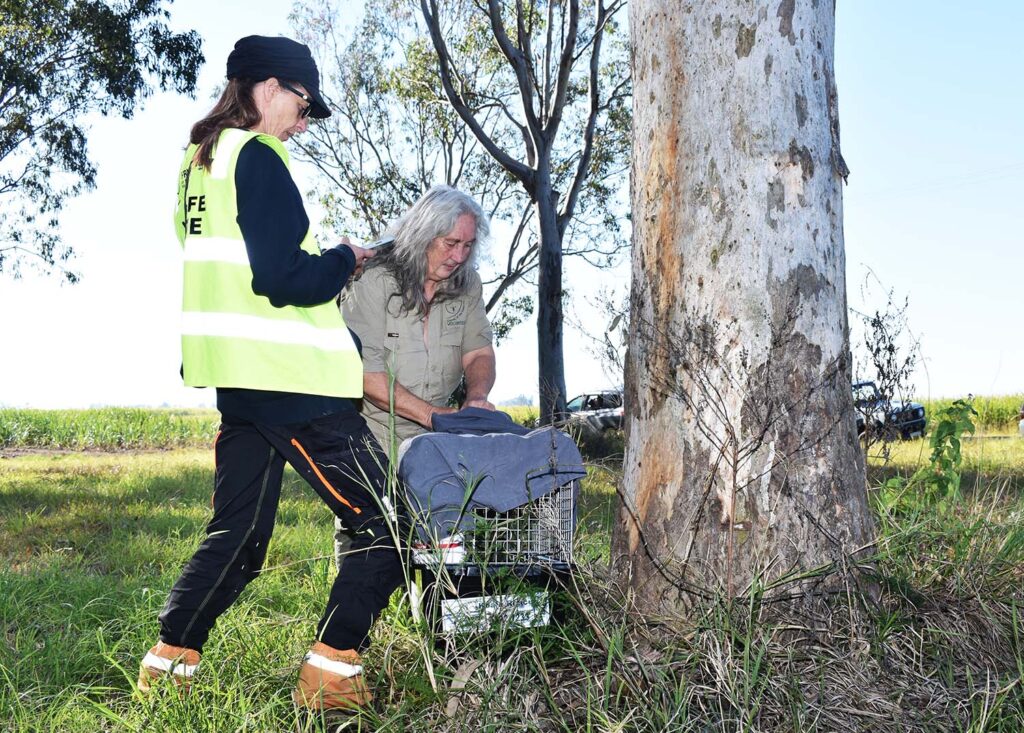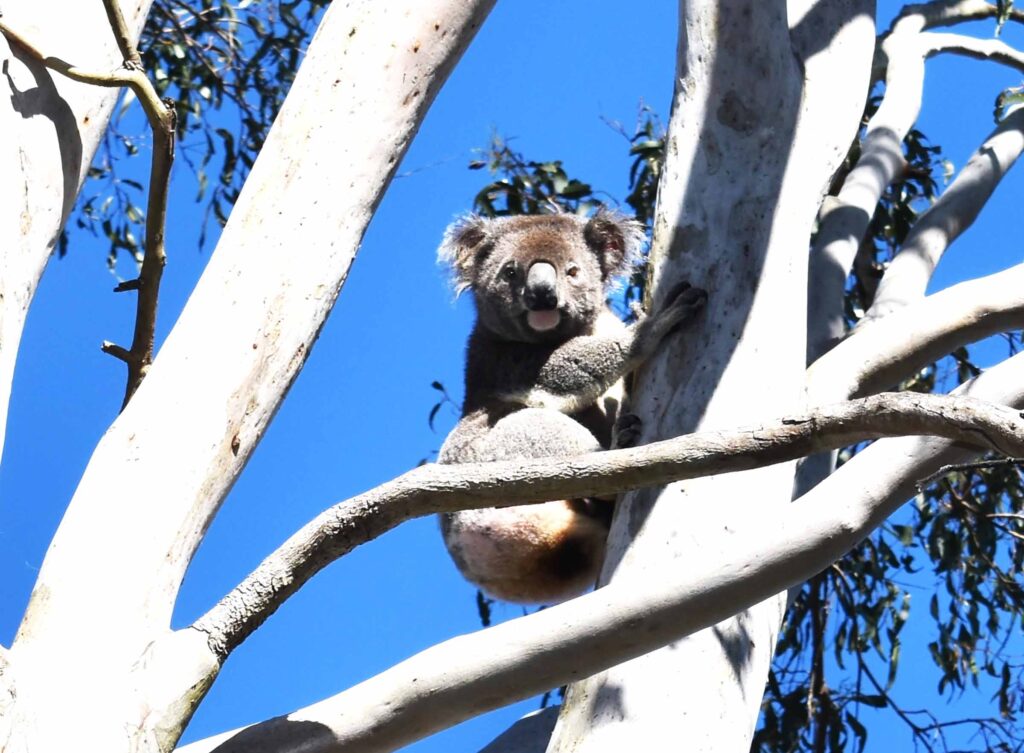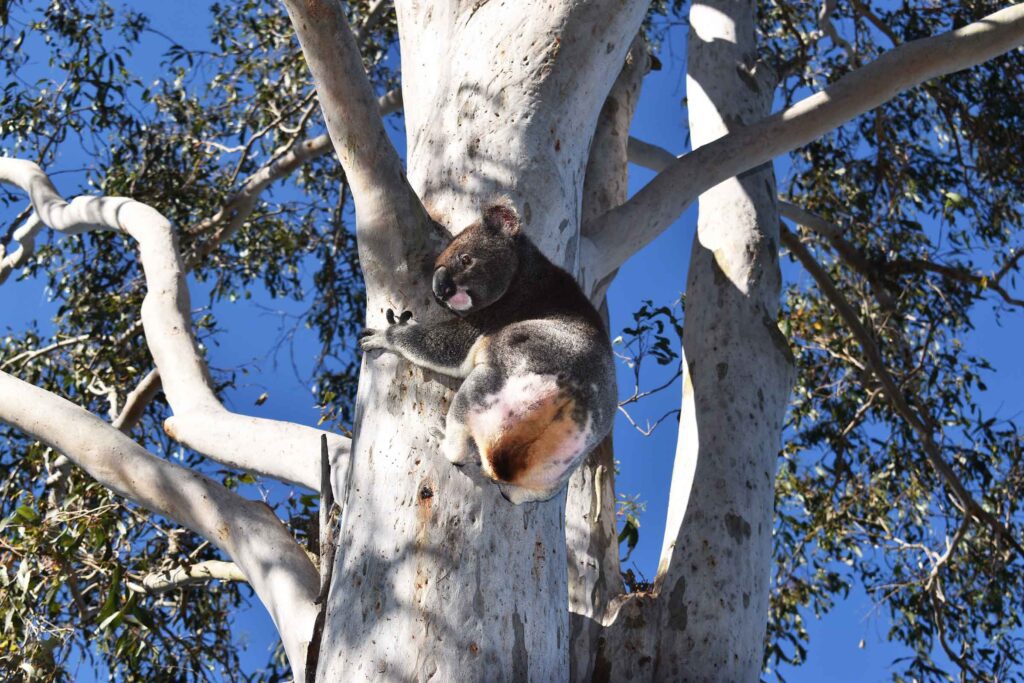ABOVE: Leto scampers up the tree on his release.
Susanna Freymark
Leto takes no time at all to climb out of the cage and scurry up the white trunk of a eucalypt next to the Richmond River at East Coraki.
Leto is a six year old koala who had a stained rump – indicating sickness – and so he was taken into care for a month.
He had been spotted by Friends of the Koala volunteers Maria Matthes and Ina Egermann.
Ina whispers encouragement to Leto who climbs higher up then stops to look down.
The area where Leto was found and returned is known as the L-area and all koalas that are cared for in L-area have a name starting with L to make it easier to keep track of the koalas across the region.
Maria and Ina move further away from the tree and continue to watch Leto. He lets out a long, loud grunt.
There is a female koala a few trees away and maybe he is letting her know he is home.
The L-area is in farmland. There are small areas of gum trees for the koalas but the trees next to the river are covered in weeds and vines that make it difficult for koalas to get to their food source, Maria said.
Friends of the Koala recently won a $199,000 grant to plant more feed trees.

Part of what Maria does is convince private landowners to have koala trees planted on their land.
In the canefields, every patch of eucalyptus trees is important.
“They eat a kilo of fresh leaf a day,” she said.
A shortage of quality feed, especially during times of drought and decreasing habitat, threatens koala numbers.
Cars, dogs and disease are the main koala killers.
Maria has rescued “so many koalas”.
“It’s not about me, it’s about making sure there is enough genetic diversity for koalas to survive,” she said.
“Not just the blip I am here – but for thousands of years to come.
“We’ve put them at such risk in the past 200-plus years.”

Maria spends her life supporting koalas. She rescues them, plants trees for them, petitions parliament and spreads the word on Twitter.
“There are over 100 koalas in this area (East Coraki).”
Landholders are supportive but we need more, she said.
Leto was typical of koalas needing help.
His rump was stained – indicating cystitis or chlamydia – this stops the koala from storing its urine and it so it stains the backside.
Maria grew up in Broadwater.
“At the time, people loved koalas, there were plenty of trees and Taronga Zoo would send medicine for the koalas,” she said.
In adulthood, she became a threatened species officer.
“When we understand the lifecycle of a species and the threats that disrupt that cycle we can determine if they go extinct locally,” she said.
Broadwater still has a decent koala population.
Unfortunately, she witnessed many dead koalas near Ballina when the Pacific Highway was being built.
Her dedication to koalas is unwavering and in her soft voice she shares her knowledge of the mammal.
You can get involved in helping koala populations thrive: Help plant trees, donate money.
Follow Maria on Twitter and go to the Friends of the Koala Facebook page where there are ways to contribute.



